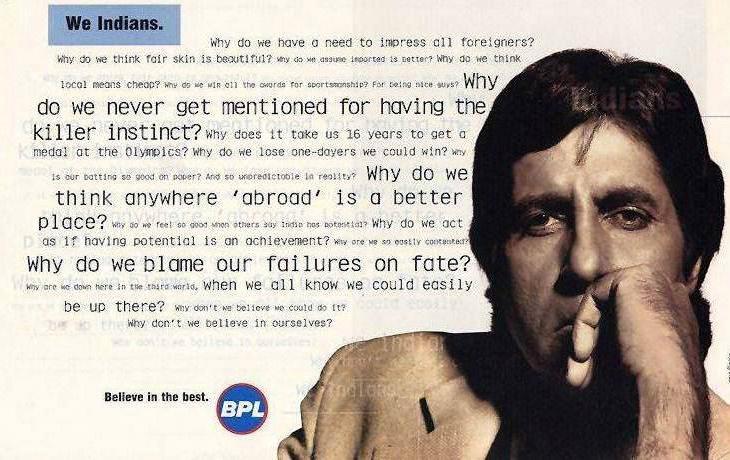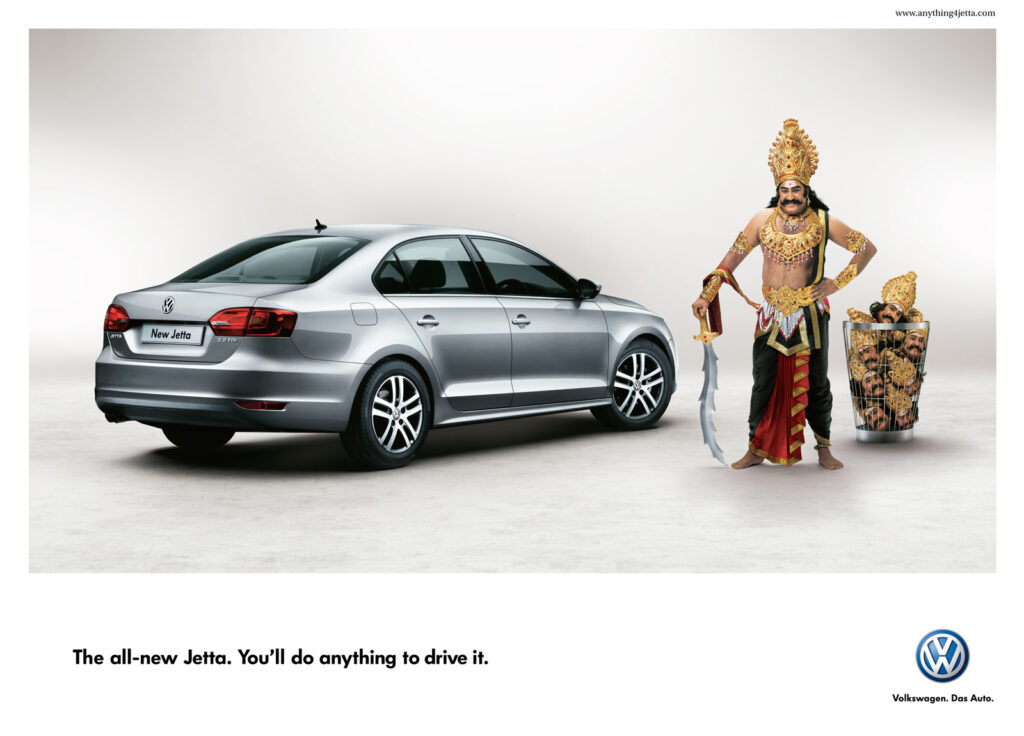
History Of Indian Advertising - A Creative Journey
Just to reinstate India as the second-largest country in the world in terms of population (1.3 Billion), this would give you an idea of the landscape of products and services in the market to sustain the population with all the marketing and advertising required to promote and stand out. Various forms of advertising have existed for ages to either sell chickens or clothes, remember there was a time before the computers or the televisions, where people had to get creative with visuals and copies palatable to that era which would eventually spread the word also known as virality in today’s terminology.
Indian advertising begins with street hawkers calling out their products creatively; they would eventually be called jingles, from the dawn of cities and markets. Documented advertising history begins with classified advertising. Ads appear for the first time in print in Hickey’s Bengal Gazette, India’s first newspaper (weekly). To ‘advertise’ meant merely to ‘inform’ until the end of the eighteenth century, and the early newspapers and periodicals announced births, deaths, arrivals of ships from England, sale of household furniture, etc. Some journals like the Bengal Journal (first published in 1785) even printed government advertisements for free. Initially, they were merely texts which give out the information eventually being replaced by a persuasive copy. These forms of adverts of products and services were a regular in newspapers and periodicals. Advertisements gave birth to more products and services as businesses were more confident in promoting their brands.
With the increasing number of industries growing in India before the first world war, British businesses joined the party of advertising on newspapers and periodicals to reach the masses, this gave the model more validation than ever before. Leading newspapers like the “times of india” and “the statement” had their own advertising departments, this was a great boon both to the advertiser and the publisher as the brand doesn’t have to worry about the layout or the copy and the publisher can maintain uniformity, these departments were the first ad agencies.
The turning point in our advertising history is the Swadeshi Movement 1907, which gave birth to indigenous industries and the installation of the first rotary linotype machine in Calcutta also in 1907. Eventually, many other publishers installed the new machines which cut the cost of producing newspapers in turn increased the circulation.

The first Indian agency was the Indian advertising agency was established around the same time. The major British agencies around this time were Alliance Advertising Associates, Publicity Society of India, L.A. Stronach and Co, and others. They catered to the needs of the affluent British and Indian elites living in the urban cities. They rarely advertised Mass consumer items like tea or soaps. LA Stronach and Co were the first to offer production and creative services making even the competing brands opt for their services.
In 1931, the first full-fledged Indian Ad Agency, the National Advertising Service, was established. Among the other Indian Agencies to be launched during this period were: New India Publicity Co. 1930, Paradise Advertising Agency of Calcutta (1928), the Indian and Eastern Newspapers Society (IENS), and others. The establishment of the Advertising Agencies Association of India (AAAI) in 1945, and the Audit Bureau of Circulation (ABC) in 1948 helped to bring some order to the chaos.
Major foreign agencies along with Indian agencies were set up in india by the 30s which led to full-fledged Indian campaigns by brands like Britannia, lux, air india to name a few. This time also saw the first Indian film actress Leela chitnis to endorse for lux for the first time in 1941.


Post Indian independence most of the British-run agencies were sold to their Indian counterparts, with few retaining their affiliation with the head office in London many opted for American agencies like Ogilvy, DDB Mudra, Leo Burnett, Wunderman Thompson(formerly known as JWT), BBDO, and others. This period of boom also saw great creative and technological advancements like the multi-coloured offset printers, creative-based designs, events, activations, market research, and PR firms. The unprecedented growth in the media and television industry gave a huge boost to the advertising industry. Surveys and TRP ratings have given a whole new dimension to the advertisers to base their campaigns and target sets on.
By the 1950s radio, goa became a mainstream advertising option, paving the way to creative jingles and songs. when the west hit the pop culture, cross-culture and counterculture movements during the 60’s and 70’s, Agencies took an abundance of creative inspirations from this era to churn out some creative and colourful campaigns with powerful slogans like ‘made for each other’ by wills showed the miracles of creative advertising and copywriting. This era is also famously known as the creative revolution of Indian advertising.
Advertisements started to have a more creative touch from its look and feel to the way it sounded on the radio, also more Indian as opposed to British. There was a huge shift culturally, brands had the freedom to portray their products more creatively using slogans in Indian and regional tones. The first product to be advertised on tv was Gwalior suitings on January 1st 1971 and Bombay dyeing became the first colour advertisement in 1980.

In the early 80’s with television and radio being more accessible, there was a paradigm shift in the advertising industry with more effective campaigns which could reach the masses seamlessly, Bollywood and India winning the cricket world cup contributed drastically to this already mammoth industry by creating a wide marketing channel.

Eventually in the early 90’s India saw a huge influx of foreign investors and manufacturers, advertising was more strategic and appealing to people creatively with impactful campaigns of that time, while many still stayed relevant. Few notable iconic campaigns were by Amul’s Doodh Doodh, Melody Toffee Why is melody so chocolaty?, Archies Greetings Every occasion was incomplete without gifting an archies, Cadburys dairy milk ad during a cricket match, Pepsi yeh dil mange more, Fevicol fishing and many more.


By the dawn of the millennium saw the rise of mobile devices and smart gadgets, which gave birth to digital marketing and search engines like google and yahoo, this gave advertisers a different dimension to showcase their products or services. With the launch of social media platforms like Facebook, Instagram, Youtube, LinkedIn, and Twitter post-2005, took social media advertising to a whole new level, where content is the king and it’s being consumed faster than ever, thanks to the smartphones and faster internet which was accessible to everyone.

We are in a world where there is so much clutter in terms of content and quality content, brands and agencies have been pushing the boundaries creatively and innovatively to create better consumer experiences, which has led to some memorable campaigns and activations over the years and time to come.

Uthra Chandrashekar is a media specialist at the DAV Media also being a psychology buff! Her research and writing explore Marketing, Digital Cultures, Advertising, the Media industry, and Literature, although she fills her soul with thought-provoking ideas about, Woman Empowerment, Social Equality, Counter Culture Living, Art, Music & Cinema.
Follow Us on Social Media
Related Posts

8 Skills To Elevate Your Digital Marketing In 2022
8 Skills To Elevate Your Digital Marketing In 2022 Marketing has been evolving for centuries and with digital marketing taking the lead, each year is a roller coaster in this

Change The Way You Search On Google – Tips & Tricks
Change The Way You Search On Google – Tips & Tricks 9 Google Tricks That Will Change the Way You Search on Google Google with over 3.5 Billion searches a

Best Ad Campaigns 2020-21| Breaking Barriers Globally
This year sums up the learnings from the previous year which brought us all together fighting the pandemic. Having said that, it has also changed the thought process and the
About Author

Uthra Chandrashekar is a media specialist at the DAV Media also being a psychology buff! Her research and writing explore Marketing, Digital Cultures, Advertising, the Media industry, and Literature, although she fills her soul with thought-provoking ideas about, Woman Empowerment, Social Equality, Counter Culture Living, Art, Music & Cinema.
Subscribe to our newsletter and stay updated to our offers and deals!
We are committed to protecting your privacy









